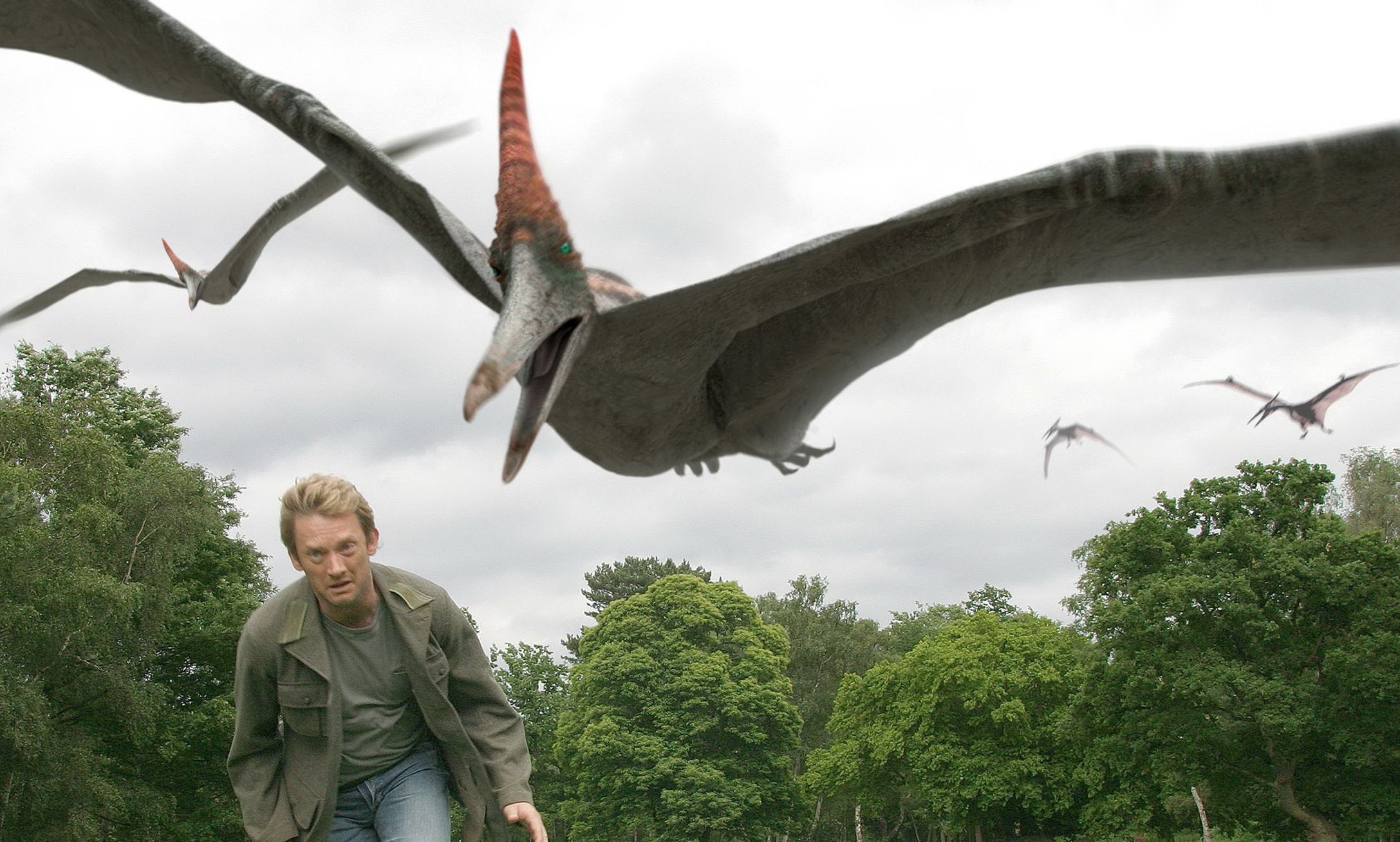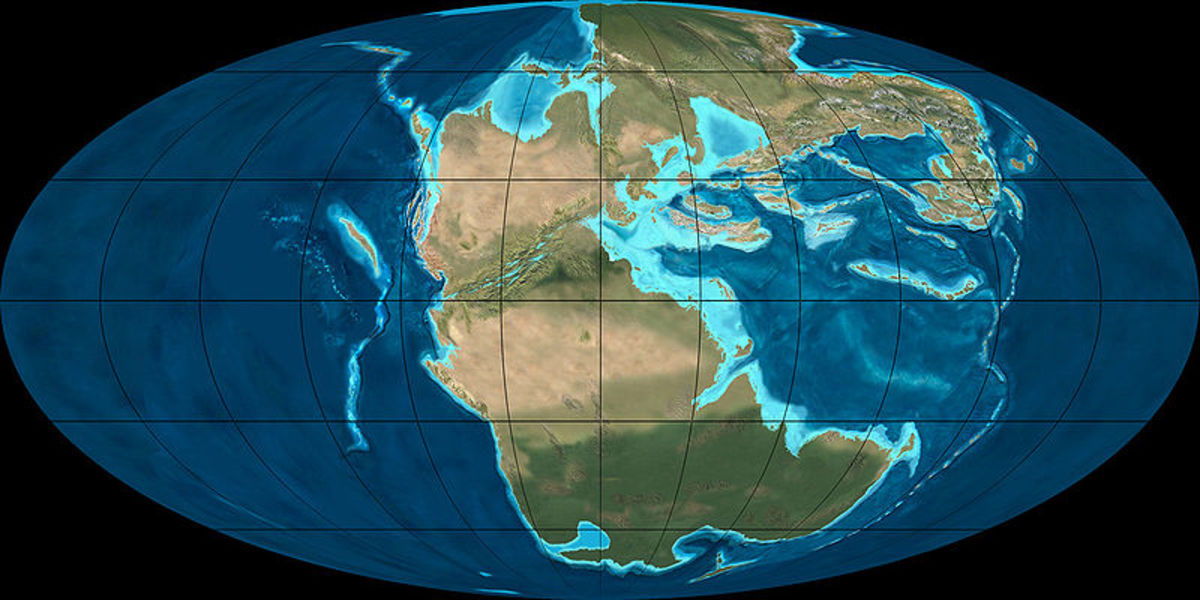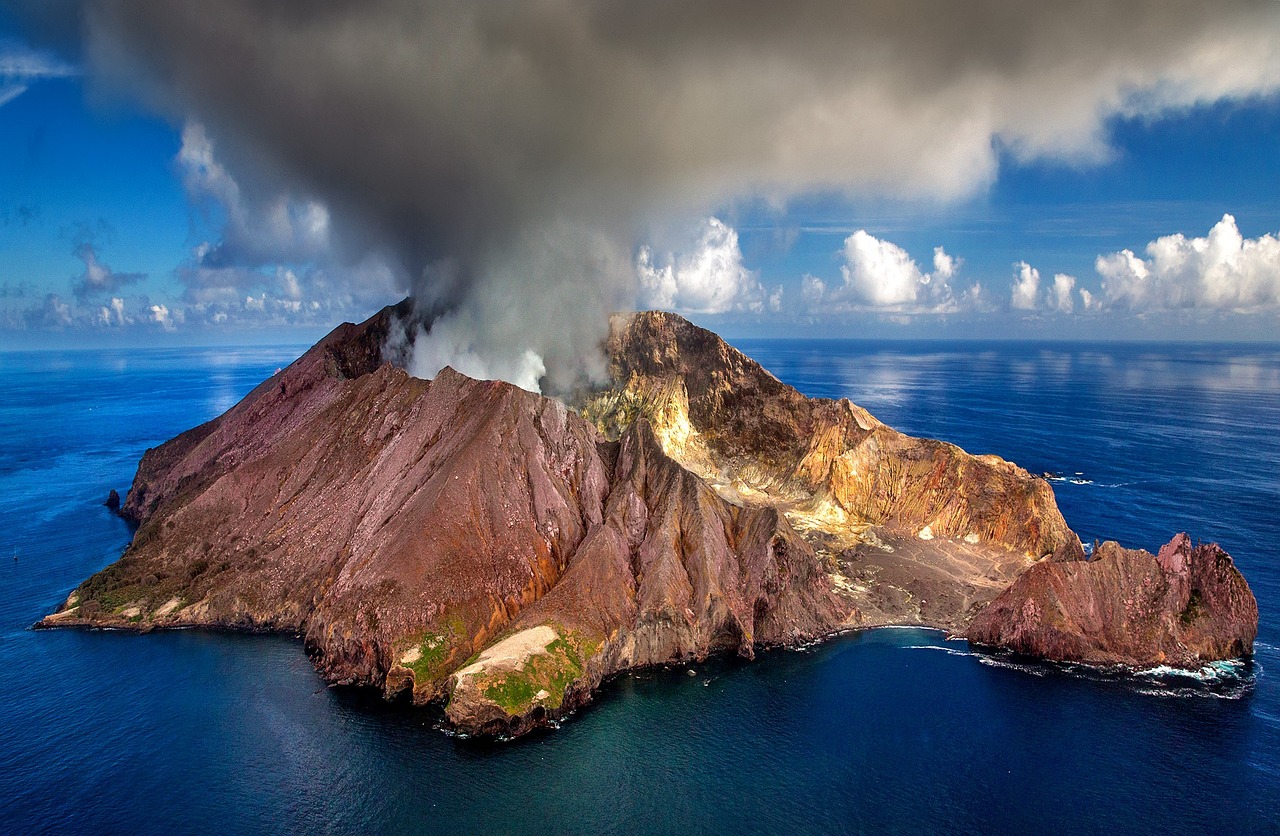DinosaurTheory Introduction
The foundational belief of science is that we exist in a rational reality. The assumption that our reality must be rational gives us hope and confidence in our attempts to understand the events and workings of our world, and it is a perspective that has been remarkably successful.
And yet, nearly every scientist has, at one time or another, come across an observation, anomaly, or outlier that they could not explain. What should we make of this? While science deniers leap on these rare events as opportunities to make the outrageous claim that we should reject all of science, authoritarian scientists can be just as wrong in denying the existence of these paradoxes to maintain their false image of science — and themselves — as being infallible. These extremists do not help science advance. Instead, science progresses when science-minded people are curious about these puzzling paradoxes, ask questions, and, if possible, investigate the problems and find the solutions.
DinosaurTheory addresses the numerous scientific paradoxes associated with the Mesozoic era — the age of the dinosaurs. During the Mesozoic era (about 245 to 65 million years ago), there were many exceptionally large animals. Most notably among them were the dinosaurs, some of which were more than three times taller than giraffes — the tallest animals alive today — and dozens of times more massive than elephants — the heaviest terrestrial animals of today.
In addition to the large dinosaurs roaming the ground, there were also gigantic animals filling the skies. Many, if not most, pterosaurs were larger than the largest flying birds alive today. This paradox is especially perplexing because pterosaurs were reptiles — and modern reptiles, no matter how small, are unable to fly because their cold-blooded metabolism does not provide them with enough power to achieve flight.
Besides the pterosaurs, there were also flying birds that — like the pterosaurs — were typically much larger than today’s largest flying birds. One remarkable feature of these Mesozoic birds is their relatively small wings. To achieve flight modern large birds need disproportionately larger wings than those of smaller birds, and so it is baffling how flying could have been so easy during the Mesozoic era that these large birds could fly with such small wings.
In addition to the fossil evidence showing the presence of gigantic animals during the Mesozoic era, there is also geological evidence that indicates something was fundamentally different about that period of Earth’s history. Most people will be surprised to learn that during the Mesozoic, there was no ice at either the North or South Poles.
DinosaurTheory contends that the immense sizes of dinosaurs, pterosaurs, and flying birds of the Mesozoic era are only paradoxes for paleontologists who refuse to challenge their core assumption: that Earth’s ancient atmospheric and geological conditions were the same as today’s. If we challenge this incorrect assumption, then these paradoxes are resolved.
Contrary to the popular myth, science is not self-correcting. For over two centuries, paleontologists have failed to solve the paradox of giant dinosaurs and pterosaurs — and they never will, because doing so would require admitting their core assumption about the Mesozoic environment — that the past must have been similar to the present — is wrong. Instead, they have tried to explain away the paradoxes by assigning the dinosaurs and pterosaurs extraordinary traits, cycling through one preposterous hypothesis after another. After decades of failure, they now resort to gaslighting the public by claiming no paradox ever existed. Trapped by a mistake made two centuries ago, they cling to false narratives rather than admit error.
By considering these paradoxes individually, paleontologists create the impression that each might be solvable with an ad hoc explanation. However, when viewed together, these scientific paradoxes form overwhelming evidence that something was fundamentally different about the Mesozoic atmosphere or geology. And not only that, when examined collectively, they reveal the solution to these paradoxes.
What follows is a list of the major scientific paradoxes involving the Mesozoic era. Think of them as clues. Read them carefully. Then, with a firm belief in the foundational premise of science — that we exist in a rational reality and so there must be a solution — please enjoy the fun and rewarding experience of applying logic to solve one of the greatest puzzles of our time. Let your reasoning and imagination guide you to your success.
Can you solve the puzzle of the gigantic animals of the Mesozoic era?
Scientific Paradoxes and Questions
1. Does Size Matter?

In the real world, size matters — but in the movie world, anything is possible.
In 1638, Galileo published Dialogues Concerning Two New Sciences, in which he explained why objects cannot exist at any arbitrary size. However, nearly four centuries later, most people — and even most scientists and engineers — are still unsure whether size matters or how it matters. Size most certainly does matter, and this is a scientific concept fundamental to nearly every discipline: physics, biology, chemistry, geology, astronomy, and so on. Yet it is almost always ignored in science education because it conflicts with the paleontology community’s efforts to dismiss the paradox of dinosaurs and pterosaurs being so large.
While science education boards recommend teaching students how size affects the properties of objects, they do not address the incongruity of the dinosaurs and pterosaurs being abnormally large. This places grade school science teachers in an awkward position, because once students grasp the implications of size, intelligent students begin questioning how dinosaurs could have grown so large. At that point, the teacher must either acknowledge that paleontologists are wrong or leave students with the impression that science does not make sense.
It is a major failure of science education that everyone is not clearly aware that size matters. However, paleontologists are never going to admit that they are wrong, and so it is up to science education boards and science teachers to acknowledge the errors of the paleontologists so that science can move forward.
2. Large Dinosaurs Paradox

This Brachiosaurus previously stood behind the Chicago Field Museum, but like its counterparts, it has since gone extinct.
Currently, African elephants and giraffes represent the upper limits of size and height that terrestrial animals can achieve in today’s environment, constrained by factors such as bone strength, muscle strength, blood pressure, and possibly gravitational respiratory stress. Yet during the Mesozoic era, 65 to 245 million years ago, the largest dinosaurs grew to over three times the height and at least fifteen to thirty times more massive than these modern animals. Species such as Argentinosaurus, Brachiosaurus, and Patagotitan mayorum reached lengths exceeding 30 meters, weights of at least 70 metric tons, and over 12 meters in height.
Paleontologists have floated one questionable hypothesis after another in their efforts to convince the public that there is nothing unusual about dinosaurs being so large. Initially, many of the bipedal dinosaurs were mounted in museums as though they walked on four legs. Nearly a century ago, paleontologists suggested that the largest dinosaurs, such as sauropods, had behavior similar to that of hippos, spending most of their time partially or fully submerged in water to rely on its buoyancy for support. Now, paleontologists argue that dinosaurs were significantly lighter due to having hollow bones.
The recent claim that hollow bones helped dinosaurs support their massive size — like so many other explanations — relies on people “trusting the experts” rather than thinking critically about whether the idea makes sense. Halving the skeleton’s weight reduces the dinosaur’s total mass by only 7.5 to 10%. Meanwhile, with less bone to bear the load, stress on the supporting limbs increases by a factor of 1.8 to 1.85 — enough to cause the bones to break. Far from solving the massive weight paradox, the hollow bones hypothesis only makes it worse.
3. Tall Dinosaurs' Blood Pressure Paradox
The immense height of some sauropod dinosaurs presents a major physiological paradox: how could these animals pump blood to their head? Using the equation P = ρ g h, where P is the pressure, ρ is the density of blood, g is the acceleration due to gravity, and h is the vertical height, the required systolic blood pressure increases linearly with neck height. For a sauropod with a head 9 meters above its heart, the pressure needed would vastly exceed anything seen in modern animals.
For comparison, giraffes, with a vertical neck height of about 2.5 to 3 meters, have specialized adaptations to sustain blood flow at high pressures. Yet their cardiovascular system already operates at the limit of biological feasibility. The much greater height of sauropods would demand pressures far beyond what thickened arterial walls and powerful hearts could likely achieve. Paleontologists do not have an acceptable hypothesis that resolves this height paradox.

4. Why Do Dinosaurs Have Their Unique Form?

Display of Edmontosaurus, a dinosaur with the typical form of a strong tail and powerful rear legs — features potentially suited for moving quickly through shoulder-height water. Many dinosaurs had a form similar to this even though it is unlikely that these dinosaurs spent much time in water.
While much attention is given to the large size of dinosaurs, there is a tendency to overlook their distinctive shape: most dinosaurs have strong tails and much larger rear legs compared to their forelimbs. But why is this the case? What is the reason behind the typical dinosaur form being so different from that of modern terrestrial vertebrates?
With such strong rear legs for propulsion and a powerful tail capable of movement similar to that of aquatic vertebrates — like a crocodile’s — this body shape might have been useful if the dinosaur were constantly moving across a river or shallow lake, provided the water remained at just the right depth.
However, this suggestion raises many questions. While the "shoulder-high water" hypothesis helps visualize the purpose of the strong tail in propelling the animal through a dense fluid, it would be both unlikely and actually impossible for the lake water to be at the ideal depth for both adult and juvenile dinosaurs of various sizes. Even stating that the water was at shoulder height doesn’t resolve the issue, since the skeletal frame of Edmontosaurus shows its tail positioned above its shoulders. For the tail to function effectively, the animal would need to be fully submerged in this dense fluid. But if the dinosaur was fully submerged, how did it breathe?
Dinosaurs were probably not breathing underwater, and based on the dissimilarity between their feet and those of modern aquatic or semi-aquatic animals, it seems unlikely that they spent much time in the water. But if dinosaurs were not submerged in water, then what was this dense fluid that gave purpose to their large, muscular tail and powerful rear legs?
5. Flying Pterosaurs Paradox

Paleontologists would have us believe that pterrifying pterosaurs could have flown in today’s relatively thin atmosphere.
Pterosaurs were giant flying reptiles that coexisted with the dinosaurs. They were the largest flying animals that ever existed. This fact is especially remarkable because flight requires a high level of power output, yet pterosaurs were reptiles — animals known for their low-power, cold-blooded metabolism. Furthermore, the larger the animal, the more difficult it becomes to meet the power demands of flight. In contrast to these large pterosaurs that made flying look easy, there is not a single reptile species today — no matter how small — that is capable of powered flight.
To explain how giant pterosaurs could take to the air, paleontologists have proposed various hypotheses, all of which attribute one or more extraordinary abilities to these creatures. Some of the most common claims suggest that pterosaurs were significantly lighter than other animals of similar size, possessed extraordinarily strong bones and muscles, and could propel themselves into the sky with a single leap. In making such claims, paleontologists benefit from having little understanding of the physics, aerodynamics, and physiological principles involved in flight.
Several variables must be considered when determining whether something can fly: the flyer’s weight, wingspan, power output, aerodynamic form, static and dynamic balance, and the density of the surrounding air are among the most critical. The explanations offered by paleontologists fall far short of addressing these requirements. Nothing in flight physics, aircraft design, or experiments with RC models of pterosaurs supports the idea that a reptile the size of a small recreational airplane could fly in present-day atmospheric conditions.
6. The Enormous Flying Birds of the Mesozoic Era Are Not Dinosaurs
For nearly a century, paleontologists placed numerous species into vague, catch-all categories because they did not know how to classify them. These species had wings, asymmetric flight feathers, and many other bird-like features. Yet paleontologists found it unimaginable that they were flying birds, as they were far too large, and their wings appeared unusually small. How could they admit to the public that they had yet another major scientific paradox they could not solve? Finally, they came up with a solution: these were not large flying birds; they were feathered dinosaurs.

Dakotaraptor had an estimated mass of 220 to 350 kg. While certainly a large bird, it may not have been the largest ever to fly.
It is understandable why paleontologists would resist identifying these creatures as flying birds: based on the assumption that the Mesozoic atmosphere had the same density as today's, according to flight physics, flight would be impossible for such massive birds. As a result, paleontologists have proposed increasingly far-fetched alternative uses for these wings, suggesting they were used for courtship displays, thermoregulation, egg protection, balancing while running, catching insects, or brooding behavior. But this approach ignores a fundamental biological reality: throughout all of history, no vertebrate has ever evolved wings for any purpose other than gliding or powered flight.
Once again, paleontologists lean heavily on the public’s willingness to “trust the experts” rather than question their claims — this time regarding the evolution of birds. But it doesn’t take a paleontology degree to recognize the numerous bird-like features — such as feathered wings — on fossils that paleontologists have mislabeled as dinosaurs. Nor does it require special training to see that their proposed evolutionary tree for birds is nonsensical — riddled with omissions, false inclusions, and species placed tens of millions of years out of order. The narrative being pushed is not just flawed — it’s a deliberate abuse of public trust.
The fossil evidence is overwhelming and conclusive: alongside the giant dinosaurs and massive flying pterosaurs, the Cretaceous period of the Mesozoic era was also home to enormous flying birds.
7. Nearly Uniform Global Climate Paradox

During the Mesozoic era, there was no ice at the polar regions. Across Earth’s entire surface, the temperature was mild and pleasant.
Today, we experience significant temperature variations due to factors such as day and night, latitude, altitude, and seasons. However, this was not always the case. During the Mesozoic era — the age of dinosaurs — temperature variations were far less pronounced. The lower latitudes were not excessively hot, nor were the polar regions excessively cold. Most notably, there was little to no glaciation at the poles. Fossil evidence, including dinosaur remains and temperate vegetation found in high-latitude regions, supports the idea of a globally uniform — or nearly uniform — balmy climate during the Mesozoic era.
If we look further back in time to the Pennsylvanian and Permian periods, the Ice Age climate of those eras more closely resembled our present climate. Going back even further, however, we see another shift: ice disappears, and climates return to a greenhouse state, much like during the Mesozoic. Some scientists refer to these alternating climate states as "icehouse" and "greenhouse" climates.
Paleoclimatologists have developed simulations to model past climates, including the Mesozoic, using hypotheses like elevated CO₂ levels and changes in ocean circulation. However, even with extensive adjustments to variables, these models struggle to fully align with the known glaciation history over the past half-billion years. For instance, they often fail to account for the significant glaciations during the Pennsylvanian and Permian periods or accurately reproduce the transitions between icehouse and greenhouse climates. This suggests that the underlying assumptions and mechanisms driving these simulations are either incomplete or fundamentally flawed.
8. What Is the Source of Earth’s or Any Other Planet’s Atmosphere?

Volcanic gas emissions — primarily water vapor, carbon dioxide, and a much smaller amount of nitrogen — are the source of Earth’s oceans and atmosphere.
Science education can be incredibly unbalanced. While most everyone on the planet has heard hundreds of times that the trace amount of atmospheric carbon dioxide causes global warming, the vast majority of people are ignorant to the fact that our atmosphere is about 78% nitrogen. Likewise most people have no idea where the Earth’s atmosphere or its oceans came from, how these fluids may have changed over time, or how the Earth’s atmosphere is different from the atmospheres of other planets. How can there be an intelligent conversations on these matters when there are huge gaps in fundamental knowledge?
The primary source of a terrestrial planet’s atmosphere is volcanic emissions, and the two most common gases released by volcanoes are water vapor and carbon dioxide. On Earth, the water vapor condensed to form the oceans. On Venus and Mars, the carbon dioxide accumulated in their atmospheres. So what happened to the carbon dioxide on Earth? And what happened to the water on Venus and Mars?
9. Why is Earth' Atmosphere So Unique?
In our solar system, planets fall into two distinct groups: the relatively small terrestrial planets near the Sun and the large gaseous planets farther away. Physics explains why this is so. Because the outer planets are much farther from the Sun, they are significantly colder, causing gas molecules in their atmospheres to be less active. As a result, these planets — Jupiter, Saturn, Uranus, and Neptune — are able to retain all the gases in their atmospheres, including the lightest ones, hydrogen and helium. In fact, they hold on to such vast amounts of these elements that they are composed almost entirely of hydrogen and helium, forming massive gas spheres. In contrast, the inner planets, having lost these lighter gases, can only retain atmospheres composed of medium-weight gases — or, in the case of Mercury, no significant atmosphere at all. Due to geological activity and chemical reactions, the atmospheres of these terrestrial planets tend to be primarily composed of carbon dioxide, followed by nitrogen, argon, and other gases. The outer planets are all large gas giants made mostly of hydrogen and helium, while the planets closer to the Sun are terrestrial and have atmospheres dominated by carbon dioxide.
It all seems to make sense — except that Earth does not fit this pattern. Unlike its nearest neighbors, Venus and Mars, Earth’s atmosphere consists primarily of nitrogen and oxygen. Furthermore, despite being larger than Venus and experiencing greater tidal forces — factors that should pump greater volumes of volcanic gases into the atmosphere — Earth has a much thinner atmosphere than Venus. So, why is Earth’s atmosphere so different from those of other planets?

If not for water on Earth's surface and the evolution of life on Earth, Earth's atmosphere would be similar to Venus' atmosphere.
10. Many Aspects of Our Solar System Are Still Unexplained
While paleontologists have failed to explain how land animals of the Mesozoic era reached such colossal sizes, planetary scientists have likewise failed to explain how Earth developed its unique atmosphere or why most of its surface is covered with water. This raises serious questions: how reliable is our current theory of planetary evolution if it cannot account for the most distinctive features of our planet, or explain what made the Mesozoic environment capable of supporting giants?
Far from being a solved puzzle, our solar system still holds major unanswered questions:
- What truly heats Earth’s interior, and why doesn’t that explanation work for all planets and moons?
- What determines planetary spacing, and why is there an asteroid belt between Mars and Jupiter where a planet should be?
- Why is there no solid explanation for the varying densities of planets and moons?
- Why do Saturn and the other gas giants have rings? How did these rings form?
- Why are some planets and moons geologically active while others are geologically dead?
These aren’t minor details — they’re fundamental problems that challenge the assumptions of planetary science. Progress depends on scientists being curious, open to tough questions, and willing to revise their views when the evidence demands it. No matter how many probes we launch to gather evidence, science cannot advance if the scientific community refuses to reckon with findings that contradict current beliefs.

Solar System
Mercury, Venus, Earth, Mars, Jupiter, Saturn, Uranus, Neptune
Composite image created so that all planets can fit. Planet size and orbital spacing not to scale.
David Esker
M.S. Physics
College Physics Instructor
Resolution of the Large Dinosaur Paradox
Science of Flight Equations
Theory of Planetary Evolution
Author of DinosaurTheory
Science is an ongoing process of discovery. We do not know why our reality exists, we struggle in defining what is life, we do not know how the laws of physics came to be, or who set the values of the physical constants, but we are certain of one thing: our reality is rational.
Comments, Questions, and Answers
Selected comments and questions are given with the permission of the parties involved.
Hello Mr. Esker,
I am no scientist, but I have a curious and open mind. I came to your page thinking you'd come to the conclusion our laws of physics slowly change
with time, which is what I had read elsewhere on the internet, a while ago.. intriguing but far fetched stuff. But you actually have a different,
far more logical answer! I loved the read and the awesome conclusion.
Greetings,
Amber
David,
When I first found your book you had the last few chapters available for sale. My only question is could I purchase the unfinished version?
You have answered the questions I had about square / cubed Law and tied together so much of the fossil record for me.
You have given me confidence when my sons ask me about paleontology and dinosaurs to share your concepts as a possible way these massive creatures could have operated.
You even touch on the 6 foot dragonfly…I could go on.
Your theory provides explanations for phenomena that I had only heard psuedo-science from cheesy Creation scientists and their water canopy or floating sheet of ice theory.
In contrast, your work is succinct, accessible but completely based on science and not fanciful presupposition.
I am a big proponent of your work. I tell anyone in my immediate circle that they need to read what you have available. Personally, I think your theory could have a profound effect on chronology and dating. Certain methods presupposed certain amounts of carbons and atmospherical gases / conditions.
Your thick atmosphere theory, if integrated into dating models could throw the chronologies on their heads. The implications of that potential are very satisfactory to contemplate.
Thank you again for your work.
I feel it is unfortunate that others minds are resistant to the concepts and theories you express.
For me, you answered questions that I had been asking for 10 years+ I am honored by your response,
To Your Success!
Jesse

Good day Mr. Esker.
Some weeks ago, I was reading your extremely interesting and thought provoking website: https://www.dinosaurtheory.com/
My reaction was very similar to "Holy ----! What a stunning concept! Could this be true?" My mind was seriously challenged. I will be reading and rereading your website again, every so often. Please keep up the fine work.
Jerry